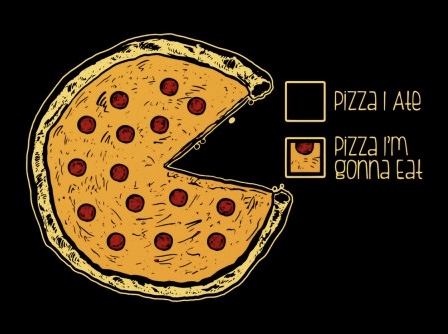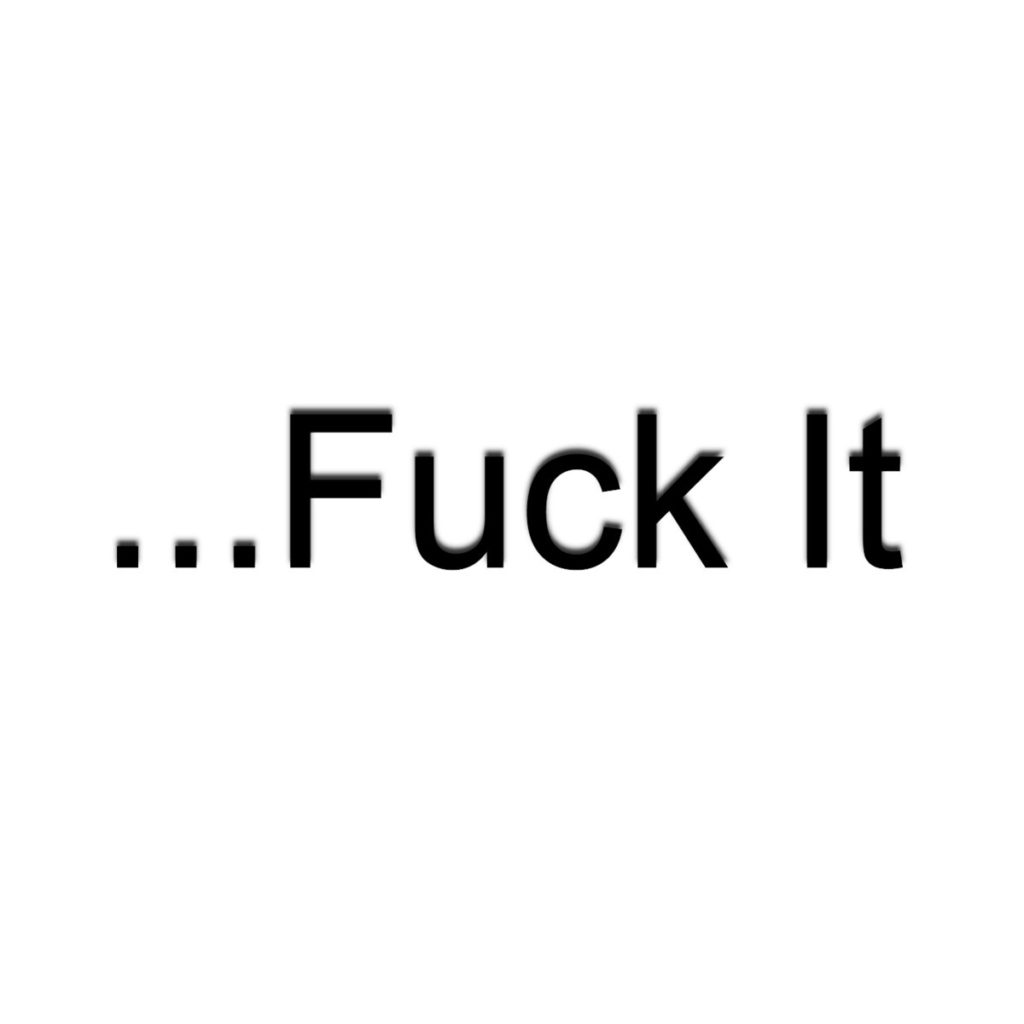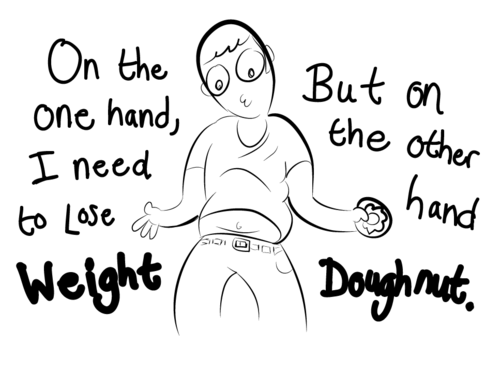There’s a psychological phenomenon aptly named the WTF Effect (The “What The Hell Effect”… I’m not sure why they used an “F” for “Hell”. Weird.)
The What The Hell Effect tends to occur when we’re moving towards a goal, but we hit a speed bump. For instance, maybe I decided that I’m going to go on an uber-strict diet. Things are going well. Then, in a fit of hunger I lose my $#!T and eat a piece of pizza. What the hell, I think. I’ve ruined EVERYTHING… might as well eat ALL the pizza. This is the What The Hell Effect.
In addiction counseling this phenomenon has a correlate with an even better name: “The Fuck-its”.
What I like about the Fuck-its is that, while the What The Hell Effect sort of surprises us and turns a whoops into a holy-shit-what-have-I-done, the Fuck-its is often something we feel coming on. It’s a sensation of not wanting to stay on the current path.
For instance, maybe I want to stop drinking so much, but I like being drunk. There’s a conflict there. And the battle between wants and likes, between who I want to become and the things I currently like to do, is writ large in the Fuck-its.
I’m pretty sure we’ve all experienced the Fuck-its. We’re doing pretty well on a goal, moving effectively towards what we want; but that sense of going back to an old path, a thing we like, starts itching the underside of our brain. We try to ignore it, but when we don’t do so successfully, we find ourselves going, “Fuck it!” Moving towards our goals gets kicked aside and we return to old habits.
As with addictions, old paths are sneaky. We tend to think we really enjoy that old path, but it’s often not the path we’re enjoying, per se — it’s familiarity. We know the old path. It’s comfy. Change is new. New is less comfy. Fuck it.
So, why in the world do I like the Fuck-its and what does it have to do with taking back control?
There is a secret power in the Fuck-its: it gives a name to the act of switching paths. In life there are a limited number of things over which we have any measure of control. The act of switching paths implies that we are dealing with one of those things. For instance, I can’t switch paths on the weather outside my house, but I can switch paths on how much ice cream I eat.
So, we can use the Fuck-its in the traditional falling-off-the-wagon way (probably not ideal), or we can invert the Fuck-its and use it against falling-off-the-wagon (maybe a better idea). Let’s weaponize the Fuck-its…
Fuck-it Buckets:
We can separate our desires into two buckets:
Bucket 1: what we “like” but deem inappropriate to our longer term goals (i.e, our current set of behaviors and habits we need to change in order to make improvements).
Bucket 2: what we “want” but is in conflict with our current behaviors and habits (i.e., the set of behaviors and habits that we feel will help with our longer term goals and thus improve our lives).
A typical scenario is that as we try to move from what we “like” to what we “want” we hit the Fuck-its and cast our plans aside. There are many reasons this happens, but they all revolve around excess stress hitting the system (e.g., lack of rest, overwork, screaming boss, screaming kids, screaming news, screaming social media, lack of human contact, uncertainty about the future, etc). We’re doing fine, then stressors are increased and we default back to a lower stress output: the set of behaviors and actions we’re most familiar with. Fuck my goals (Bucket 2), I’m going to do that thing I do when I’m stressed (Bucket 1).
If we invert the Fuck-its, we get something like: Fuck doing that thing I do when I’m stressed (Bucket 1). I’m doing something goal-related (Bucket 2).
So here’s the actionable part (and the rub, because most people won’t take the tiny step that follows… but then, the majority Of people fail to improve their habits and behaviors and blame the stressors of life. A minority perform a few minutes of advanced planning to improve their likelihood of success and thus their futures. Be the minority!):
You have to write down your Bucket 1 behaviors and their Bucket 2 counterparts (e.g., Bucket 1: eating a bucket of ice cream. Bucket 2: staying on my nutrition plan.)
Then you need to make your Fuck-it Phrase: “Fuck ice cream, I’m waiting 30 minutes to see if I really want it”, or whatever action you think will help you stay out of Bucket 1. (And remember, if your Fuck-it Phrase isn’t working, it’s not that you suck, it’s that your phrase sucks. Make a fresh one.)
You also have to say your Fuck-it Phrase. Out loud helps a ton, but even just repeating it in your head starts the rewiring process and gives your brain an immediate touchstone it can return to during times of higher stress when the Fuck-its are most likely to appear.
Too easy? That’s the point. The path of least resistance will tend to win, especially when we’re under duress. Don’t try harder — fuck-it — try easier.
*I should probably point out that this isn’t a silver bullet, but it’s especially useful in scenarios where external environments can’t be controlled (maybe you’ve decided to stop eating dairy but live on a dairy farm), or controlling the environment is harder than struggling to reach your goals (maybe you want to eat less chocolate, but getting the chocolate out of the house or putting the bowl out of sight causes more family discontent than you’re willing to deal with right now). First control the external environment as much as possible, then attend to your internal environment.




